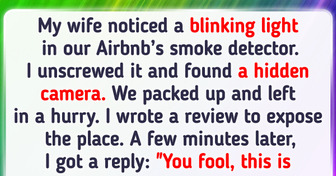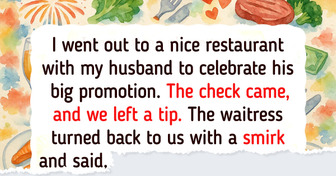Jennifer Aniston Shocks Public With Her New Look, Fillers Officially Ditched

Today we’re going to reveal some fast-food secrets. By now, we’ve all learned that we never get the exact same food as we see in ads.
But, uh, there is way more stuff to know about how fast-food companies make us buy food. It’s like they make your brain order, “I’ve seen something delicious. Get that for me, asap.”
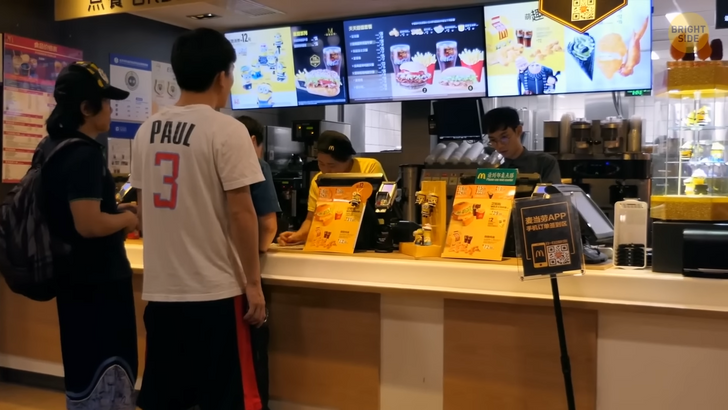
Imagine entering a food court and smelling all that beautiful food. As you walk by, one smell stands out from the others. Freshly baked Cinnabon! Yes, they do bake them, but the smell that reaches your nose doesn’t come straight from the oven.
Cinnabon bakery chains place their ovens near their front door to attract customers. That smell isn’t just coming from the oven, though. The staff heats baking sheets with sprinkled cinnamon and brown sugar to keep the sweet aroma in the air all day long. These smells make you feel hungry even though your stomach isn’t empty.
Let me introduce you to “aroma marketing.” The aim here is to make products irresistible. Did you notice the unique scent of crispy fries from McDonald’s? It’s the same smell in all stores worldwide.
This is a pre-planned strategy. You smell these aromas, and your body increases ghrelin production. Ghrelin is the hunger hormone, by the way. Your stomach produces it. So, yeah, these smells can stimulate your appetite.
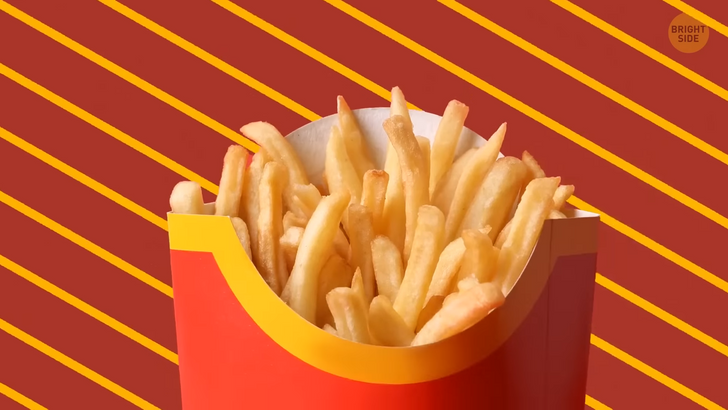
Another strategy to lure customers is to use the power of colors. They also trigger your appetite. Think about the most famous fast-food restaurant logos and the colors used inside and in their branding. Slogans, mascots, or meals can change, but nearly all well-known fast-food chains go with a similar color palette.
That’s no coincidence. Research proves that these warm colors activate your hunger. Also, they grab your attention. Think about it as a traffic light or a stop sign. You kind of want to stop.
In the past, people burned many calories to find food. Are you going to hunt some animals and gather some herbs? No. You just need to walk into a café around the corner to get your food in 5 minutes. Since this food is not expensive and is served fast, your brain’s reward system favors it. Convenience is also addictive, like sugar. Brands are aware of this, and this leads us to the next fact.
Businesses know how our brains work and manipulate them. If you’re asked if you want to have a larger size of fries or drink, it’s likely that you will say yes. Every brand earns millions of dollars just by upsizing the menus, for instance. Upsizing costs less, but, oops, you’ve actually just spent more than you intended. The pricing format and dollar menu are also part of this trick.
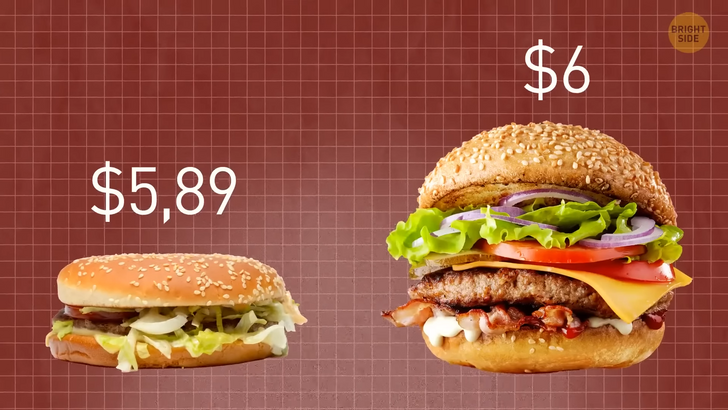
You see numbers advertised as “only 5,89.” It’s almost 6, but your brain associates it with the number 5 because you see 5 written there, not 6. Plus, the currency signs are sometimes small and hard to read. You go for a “la carte option,” but they are placed on the sides, and extra value meals flash out. When you look at the prices, a place in your brain called the orbitofrontal cortex takes control.
Research shows that when a person buys something knowing there’s a better deal among the options, the brain activity shows signs of pain. There’s a good offer — but if you take it, you end up eating more. Maybe you only want to buy a burger, and you end up with fries and a drink. On the other hand, it’s good if that was your intention all along. I can’t argue with that.
Do you know that your burgers are wrapped in grease-repelling paper? This means that this paper might contain harmful chemicals. Researchers tested samples taken from 400 containers and wrappers from fast-food chains. They discovered that 38% of sandwich and burger wrappers contained fluorine — a rather toxic substance.
And it’s not just sandwich and burger wrappers. They also found that 56% of dessert and bread wrappers and 20% of French fries’ sleeves contained fluorine. So, sadly, not just fast food but also its packaging can be harmful.
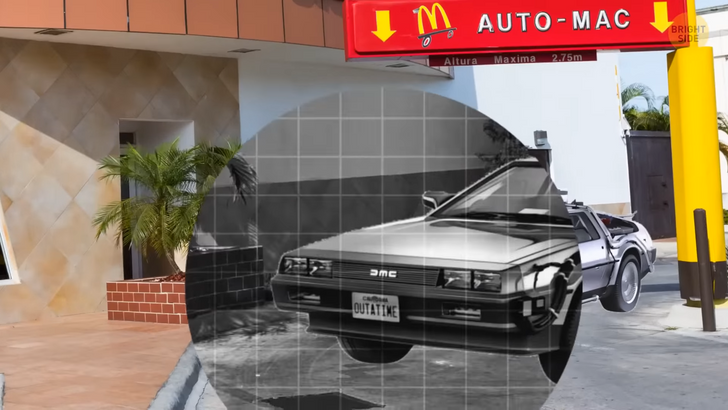
Here’s another trick. When you’re on your way to get a snack from the drive-through, the machines will recognize your license plate, and, based on your previous purchases, they will flash similar options in front of you. Another thing about drive-throughs is that they place cameras there.
Sometimes you just talk through the buzzer. You can’t see the staff, but beware, they can see you in some chains. Those use devices like magnetic sensors to notice vehicles. Then employees get notified via their headsets. They press a special button to activate their mics.
Without sensors, cameras, and windows, how could they see you coming? They aren’t psychic. Don’t worry much, though. Employees probably don’t care what you do. I mean, they have a million other things to do instead.
Let’s assume you get a burger from the drive-through. You have grilled meat in it. Wait a minute. Is it really grilled? Shocking news. They add a solution, sort of sauce with a “grilled” flavor, to the meat and make those fake grill lines on it. They can’t grill meat at such short notice, but people like this look, so they go with this option.
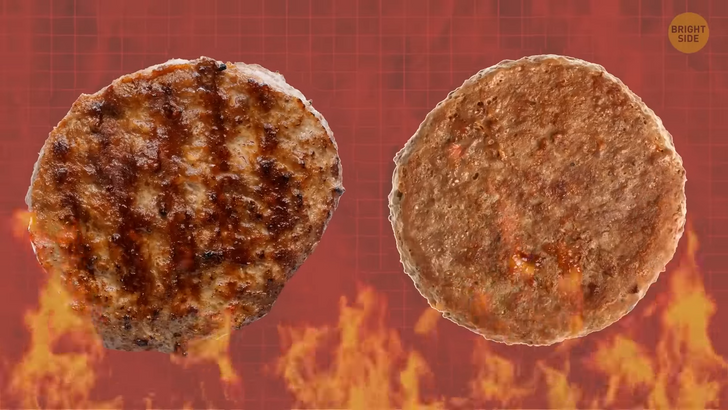
Speaking of faking it, fast food is very processed. I mean the “flavor in the burgers and nuggets is often gone in the process” level of processing. To compensate for this, companies add special chemicals to give the food taste and aroma.
Earlier, we talked about the tricks companies use in drive-throughs. It’s time to reveal the secrets of self-serve kiosks. You tend to spend more when you order your food via these kiosks. Restaurants expect that you’ll spend about 20% more. The system in these kiosks is designed to upsell. Cashiers ask you questions. But while using a self-service kiosk, you don’t feel rushed or maybe judged for your order and choices.
A lawsuit was filed in the U.S. about one fast-food chain’s tuna sandwich. It turned out that the ingredient advertised as tuna had no tuna in it. This was concluded by tests run in independent labs with multiple samples taken from this chain in California. The fast-food chain said the claims didn’t reflect the truth. So we need to wait and see.
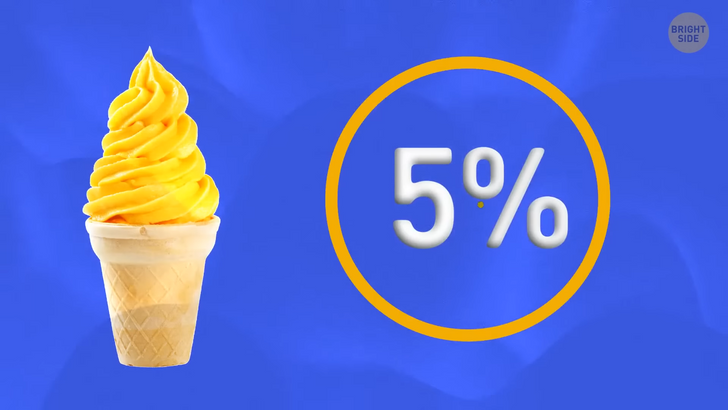
Fancy eating a blizzard, cone, or parfait from DQ? No one can stop you, but you should know that, technically, what you’re eating isn’t ice cream. Dairy Queen’s soft serve has a 5% milk fat. FDA says that a product has to have at least 10% of milk fat to be considered ice cream. But the company isn’t keeping this fact to itself. It’s written on their website.
What about discount coupons or free products? It’s all part of the plan. Some people go to restaurants with coupons. They think, “I might also get this or that since I’m already here.” Most of them buy something else. And the item they buy is often more expensive than the free item on their coupon.
Sometimes, people want to go with healthier options in fast-food chains. They might miss the point that healthy might not be healthy at the end of the day if a person orders a sauced chicken salad. They might end up having more calories than they would get from a burger. On top of this, healthier options often cost more in comparison to regular items.
Anyway, this is an ever-lengthening list. After all, the fast-food industry is huge. We’re talking about billions of dollars. Maybe that’s why it comes with a lot of secrets behind the scenes. Hmm, we’ve been talking about all this, and now I want to order a burger!








